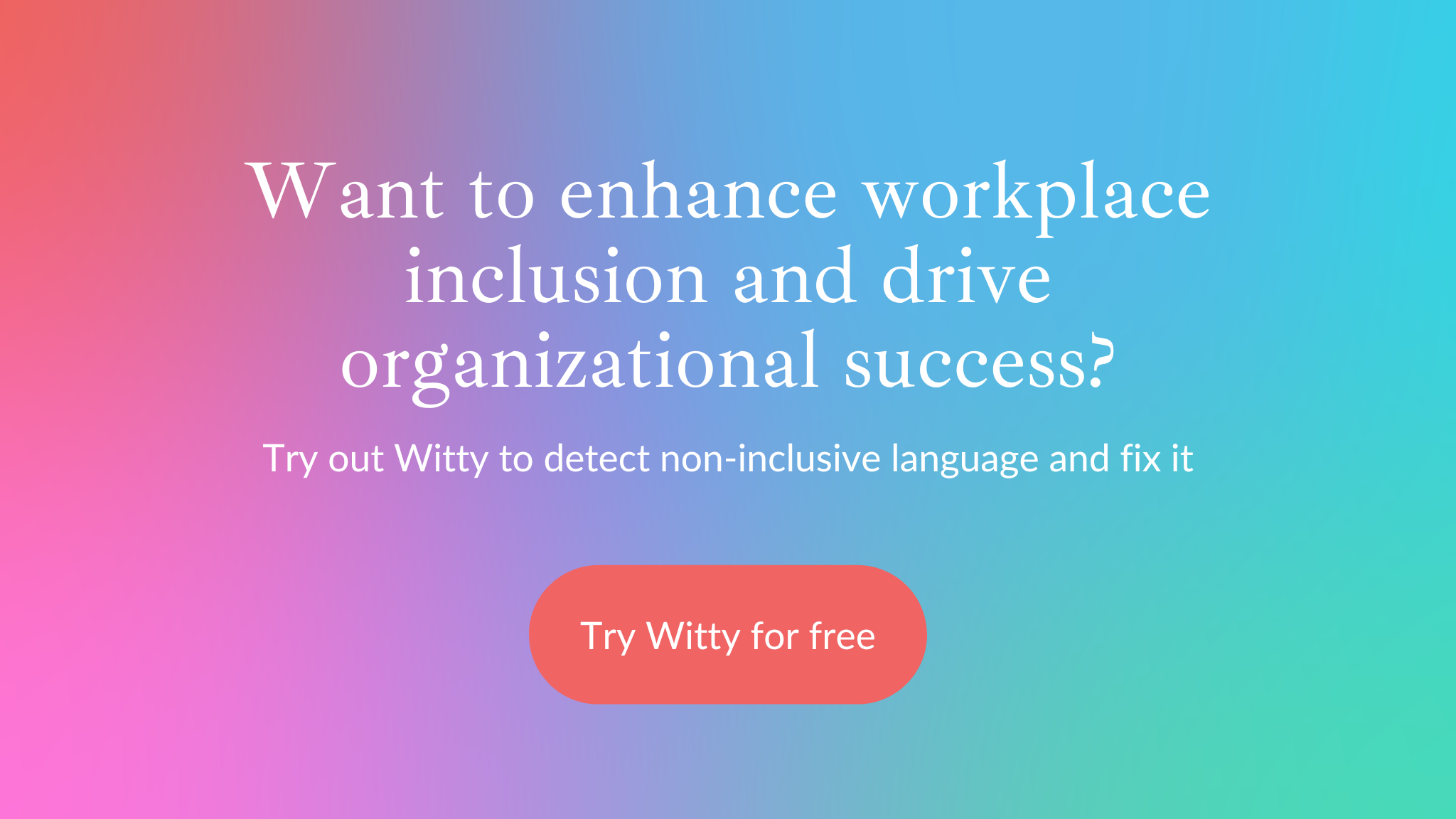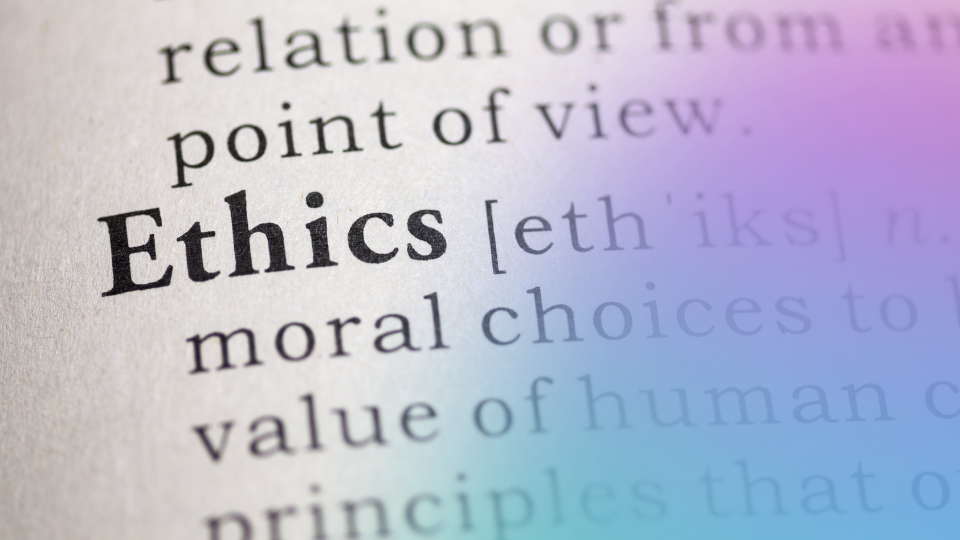Recently, we have conducted a survey with 162 organizations from all over the world about the importance of Inclusive Language in promoting workplace diversity and inclusion. This abstract summarizes the highlights of the study.
Download our study in full. It's free!
Inconsistent commitment to DEI
Workplace diversity and inclusion have emerged as critical strategic imperatives in the 21st-century corporate milieu in an ever-evolving global marketplace. From enhancing creativity to driving performance, a wealth of empirical research has established the advantages of a diverse and inclusive workplace.*
However, the study "Diversity and Inclusion Pulse Survey" (2019) conducted by Russell Reynolds Associates suggested significant variation in the degree of diversity and inclusion commitment among surveyed companies.
Consequently, it is against this backdrop of inconsistent commitment to Diversity, Equity and Inclusion (DEI) that our study is situated. We aim to explore the attitudes toward DEI within organizations and uncover potential avenues for advancing these crucial principles.
Interplay between language and DEI
A considerable body of research acknowledges that language is a significant influencer of perceptions and attitudes (see below: Boroditsky, Linguistic Society of America, Gaucher et al).
In this study, we aimed to delve deeper into understanding how organizations perceive the interplay between language and DEI and if they do believe that the language used at the workplace could be a driver for their DEI efforts.
We analyzed the following topics:
- Language Habits and Their Modifiability
- Limits to Language Changes in Organizations
- Language's Role in Perpetuating Stereotypes
- Organizational willingness to Use Inclusive Language
- Impact of Language on Workplace Inclusion
We surveyed 162 organizations** from all over the world. The multiple-choice survey allowed us to gather measurable data while gaining insights into employees’ and organizations’ attitudes and behaviors.
The survey's design also incorporates pertinent findings from previous studies on business performance, leadership diversity, and organizational culture by McKinsey & Company, Boston Consulting Group, and Russell Reynolds Associates. This multidisciplinary approach allows for a nuanced exploration of the research themes.
Results of Study: Inclusive Language as a pragmatic driver for DEI
Language can be used as a driver for change
There is a broad consensus among organizations that language habits can be changed and are a driver for change. 52% believe that language habits can be changed effectively, while 47% also suggest that language habits can be changed, but only to a certain extent. This latter group acknowledges the influence of deeply ingrained cultural factors and habits, which might limit the extent of change possible. Only 1.2% of respondents lean towards the idea of language as a consequence of social change rather than a driver. In sum, a very large majority of respondents (98.8%) agree that language at the workplace can be a driver for change.
High willingness and effort to use Inclusive Language
Most participants indicated a high willingness to use inclusive language at the workplace consistently. 85% of respondents either make a very high or a high degree of effort to use a language that addresses and includes everyone. This finding underscores a general trend toward valuing and promoting inclusion in language use.
Language can perpetuate harmful stereotypes
Surveyed organizations are convinced that language can perpetuate harmful stereotypes. The responses were given on a scale of 1 to 5, with 1 indicating a lack of belief that language can perpetuate harmful stereotypes and 5 denoting a strong belief in this idea. 80% of respondents answered with scores 4 and 5. Interestingly, only a negligible number of respondents (4 out of 162) provided scores of 2 or 1, suggesting low to no belief in this phenomenon. In summary, participants demonstrated a strong awareness of how language can reinforce harmful stereotypes.
Language has an impact on workplace inclusion
79% also believe that the language we use has an impact on workplace inclusion (60% with score 5 and 19% with score 4). In summary, the data reveals a strong consensus among participants on the influential role of language in promoting or hindering workplace inclusion.
The context in which Inclusive Language should be used
Finally, we asked in which context the participants see it as a priority that inclusive language should be used.
- Branding and Advertising: 74% highlighted the importance of using inclusive language in branding and advertising. This reflects the understanding that an organization's external communications should be inclusive to reach and resonate with diverse audiences.
- Talent Acquisition: 75% emphasized the need for inclusive language during recruitment. This suggests a recognition that inclusive language in job postings, employer branding, and interviews can help attract a broader range of candidates and promote diversity in the workforce.
- Internal Communications: 77% mentioned the importance of inclusive language in all internal communications. This indicates a broad consensus that inclusive language should be a standard part of everyday interactions, staff meetings, emails, and other forms of communication among employees.
- Others: There were other specific areas where respondents suggested using inclusive languages, such as public relations, daily business, and always, among others. However, these were relatively less frequently mentioned.
These findings indicate a comprehensive understanding of the importance of inclusive language across various aspects of organizational operation. It suggests that most participants recognize the role of inclusive language in fostering a diverse, inclusive, and respectful internal and external environment.
Interpretation of Findings
We find significant parallels between our findings and existing research when interpreting our survey results within the broader context of diversity and inclusion in the workplace. Respondents consider language habits to be changeable, demonstrating a clear understanding of language as a flexible, adaptable tool. This is particularly important in a diverse workplace, as it suggests that organizations can cultivate an inclusive environment through strategic language use adjustments (Russell et al., 2019).
The survey further revealed a heightened awareness of language's role in shaping perceptions of diversity and inclusion. This aligns with current trends of increasing societal recognition of diversity and inclusion as fundamental to successful organizations, pressuring businesses to take demonstrable action toward these goals (Hunt et al., 2018).
Lastly, the consensus on the necessity of inclusive language across multiple organizational operations demonstrates the far-reaching implications of language use. Beyond internal and external communication, language plays a role in other operational areas, such as branding, advertising, and recruitment.
It also underpins language's transformative power, asserting its capacity to shape thought and societal norms. Research suggests that language can either support or challenge harmful stereotypes, which aligns with our findings, thereby highlighting the vital role of language in driving societal and organizational change.
When our survey's findings are juxtaposed with the data and insights derived from these previous research studies, it further emphasizes the crucial role of language habits and inclusive language in promoting diversity and inclusion. As organizations increasingly value these aspects and commit to DEI, language proves to be more than a medium of communication - it is an instrumental tool in enhancing workplace inclusion and driving organizational success.
Recommendations
The results underscore the belief of employees and organizations in inclusive language as a driver to sustainable DEI. And there is a high willingness to apply inclusive language in the workplace in order to foster an inclusive workplace.
Given that existing research indicates traditional training methods may not always yield significant improvements in fostering inclusive language use (see: Why diversity training alone won't work), organizations are encouraged to leverage innovative tools, such as Witty, to support their diversity and inclusion efforts. Witty, a real-time language tool, can assist employees in identifying and correcting biased language use, thereby offering a practical, immediate solution for promoting more inclusive communications.
In addition to adopting real-time inclusive language tools, companies should create comprehensive language policies, effectively promoting inclusion while minimizing unintentional exclusion (find help here).
Furthermore, organizations must nurture a culture that truly values diversity and inclusion. This means introducing and enforcing inclusive policies and ensuring that the organizational norms and practices genuinely reflect these values. This holistic approach to diversity and inclusion is crucial for creating a work environment where everyone feels respected and valued.
—----
* McKinsey & Co.'s groundbreaking studies, "Diversity Matters" (2015) and "Delivering Through Diversity" (2018), offer a compelling argument for the business value of diversity. The Boston Consulting Group's study reinforces this assertion, "How Diverse Leadership Teams Boost Innovation" (2018), reporting that companies with above-average diversity on their management teams reported innovation revenue that was 19 percentage points higher than those with below-average leadership diversity.
** The pool of participants for this study was diverse. It encompassed 162 employees from diverse professional backgrounds and roles, spanning companies of various sizes. The smallest company comprised only two employees, while the largest 77,000. This broad spectrum of representation across companies of different scales enriched the data with experiences and perspectives, ensuring the study's findings have broader applicability and relevance across different organizational contexts. The survey was collected over two weeks.
Citations
Hunt, V., Layton, D. and Prince, S., 2015. 'Diversity Matters'. McKinsey & Company.
Delivering through diversity (2018). Available at: https://www.mckinsey.com/capabilities/people-and-organizational-performance/our-insights/delivering-through-diversity.
Lorenzo, R. et al. (2018) ‘How Diverse Leadership Teams Boost Innovation,’ BCG Global [Preprint]. Available at: https://www.bcg.com/publications/2018/how-diverse-leadership-teams-boost-innovation.
Russell et al., 2019. 'Diversity and Inclusion Pulse Survey'. Russell Reynolds Associates.
Gaucher et al. 2011. ‘Evidence that Gendered Wording in Job Advertisements Exists and Sustains Gender Inequality’.
Linguistic Society of America (no date) Does the language I speak influence the way I think? Available at: https://www.linguisticsociety.org/content/does-language-i-speak-influence-way-i-think.
Boroditsky, L. (no date) How language shapes the way we think. Available at: https://www.ted.com/talks/lera_boroditsky_how_language_shapes_the_way_we_think/transcript?language=en.





